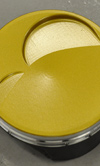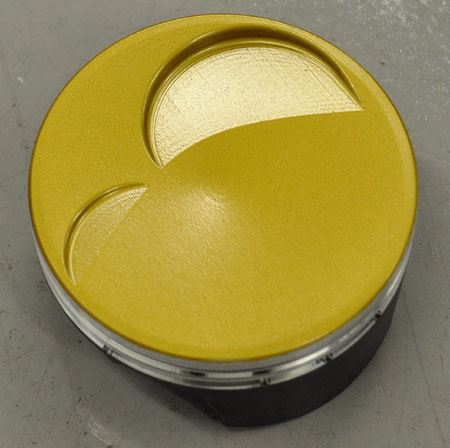NASCAR regional touring series pistons
 In the world of NASCAR regional touring series, 'spec' or crate engines are the way of the present and the future, making it difficult for teams and drivers wanting to use open engines to compete on a level playing field. The sanctioning body readily gives advantages to the small-block crate while making it difficult for engine builders to be competitive with their own engine builds.
In the world of NASCAR regional touring series, 'spec' or crate engines are the way of the present and the future, making it difficult for teams and drivers wanting to use open engines to compete on a level playing field. The sanctioning body readily gives advantages to the small-block crate while making it difficult for engine builders to be competitive with their own engine builds.
Garrett Jacobson Motorsports in Northridge, California, is bucking that trend by using former Roush Yates Engines Ford C-3 Nationwide V8s as the basis for its K&N Series NASCAR West entry. Building this engine goes against the grain and is, for chief operating officer Gregg Jacobson, the only way he feels confident of the engines he provides. The objective is to update this older technology as it trickles down to him while keeping up with current technology.
"We can do as much development work as we want to within this class, and we do," Jacobson says. "We are always looking for that competitive edge yet are constrained to the rules and limits set by the sanctioning body, and we can do what we want - as long as we stay within the limits they set."
In his various engine build-ups, Jacobson has been using the same pistons almost exclusively for nearly a decade. He stipulates that the dome of the piston be machined with a radial, concave dish shape, developed "to allow for better load distribution across the face of the piston, in addition to improved flame propagation".
In designating the specifications for this piston, Jacobson asks for a proprietary ceramic dome coating that provides a thermal barrier, helping to reflect heat back into the combustion chamber as well as protecting the piston from the scourge of detonation.
For the piston skirt, Jacobson specifies a graphite film because it can serve as an anti-friction barrier and helps reduce persistent scuffing on the skirt. The piston is a triple-ring set-up, common for this type of V8 engine that sees continually high rev ranges.

Jacobson expects pistons to last a complete season, which could be anywhere from 20-35 races of various lengths, from 50 to as many as 200 laps. "That depends on the environment in which the engine is run," he says. "In a perfect world we don't expect to see any appreciable wear." Jacobson tries to get his engines returned for examination after 800 track miles, but with teams on the road that schedule has to be somewhat flexible.
The most wear Jacobson might see on his pistons is in the pin boss. "We check for out-of-round and signs of any metal transfer," he explains. "We also watch the ring lands, which are prone to wear, particularly with the top ring that takes most of the abuse from combustion forces."
Jacobson is always looking for ways to get newer technology into his older engine package - the C-3 has been out of use in Nationwide competition for nearly a decade - and notes that "piston technology is constantly evolving and we are always looking at current trends in the industry."
Fig. 1 - Garrett Jacobson Motorsports specifies the coatings for its radial dish Diamond piston (Photo: Anne Proffit)
Written by Anne Proffit